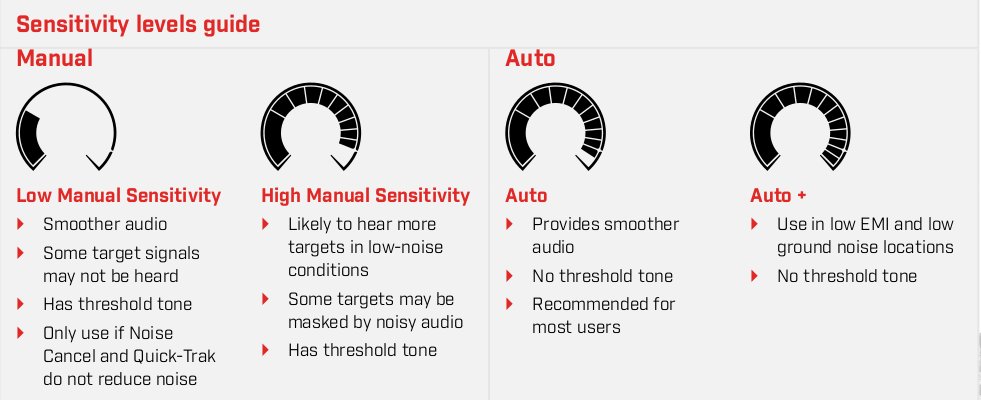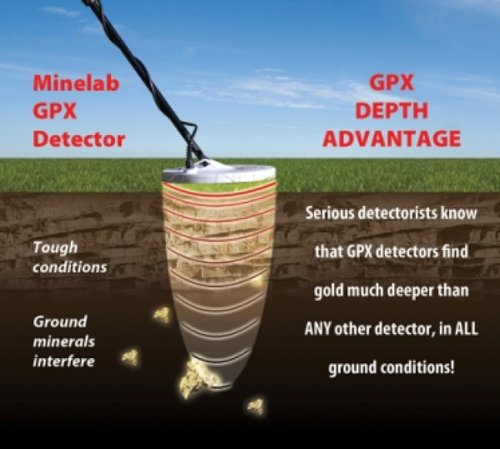Interesting stuff! Reading another minelab patent, I would imagine that the 6000 has some advanced signal processing that causes the noise from the ground and EMI to be calculated and ignored. Hence why it can be a silent threshold.
This patent talks about multiple readings from the ground that are processed and applied to different channels simultaneously.
"generating a transmit magnetic field for transmission into the soil based on a transmit signal; receiving a receive magnetic field, providing a receive signal induced by the receive magnetic field; determining, based on the receive signal, a model of at least two independent components of the receive signal which are due to signals from the soil; processing the receive signal to produce a set of data which is with effects of the signals from the soil reduced therein or removed therefrom by fitting the model to the receive signal, then subtracting the fitted model from the receive signal; and producing, based on the set of data, an indicator output signal for indicating a presence and/or identity of the target."
"In the previous calculations we have represented the signals as vectors of values. In practice, the receive signal can be represented as a vector of values, for instance by sampling the receive signal at various times with each sample representing a value in the vector representation, or by synchronously demodulating the receive signal with multiple time windows to produce multiple channels in the case of a PI or PI-like metal detector"
"Recording the receive signal over some time in an environment where there are multiple independent components allows us to decompose the recorded receive signal into its independent components. That is, we can determine what the independent components are for a particular soil."
"a magnetic field transmitter generating a transmit magnetic field for transmission into the soil based on a transmit signal;
a magnetic field receiver receiving a receive magnetic field;
providing to a processing unit a receive signal induced by the receive magnetic field;
the processing unit determining, based on the receive signal, from a plurality of possible models, a model of at least two independent components of the receive signal which are due to signals from the soil, wherein the model provides an estimation of at least three different channels;
the processing unit processing the receive signal to produce a set of data which is with effects of the signals from the soil reduced therein or removed therefrom by fitting the determined model to the receive signal, then subtracting the fitted model from the receive signal; and
the processing unit producing, based on the set of data, an indicator output signal for indicating at least one of a presence and an identity of the target;
wherein the step of processing the receive signal to produce a set of data which is with effects of the signals from the soil reduced therein or removed therefrom includes:
sampling or demodulating the receive signal to produce the at least three channels;
fitting the model to the at least three channels; and
subtracting the fitted model from at least one of the at least three channels." (
https://patents.justia.com/patent/9366779)
So basically, taking into account some of the black magic I dont fully understand!....Geosense may relate to the detector taking constant readings of the soil components and assigning these to signal processing channels. These signals are then combined to produce a data set. The presence of a target then happens when the received signal differs from the processed data in the data set.
I think :/
Sounds cool. I want one







